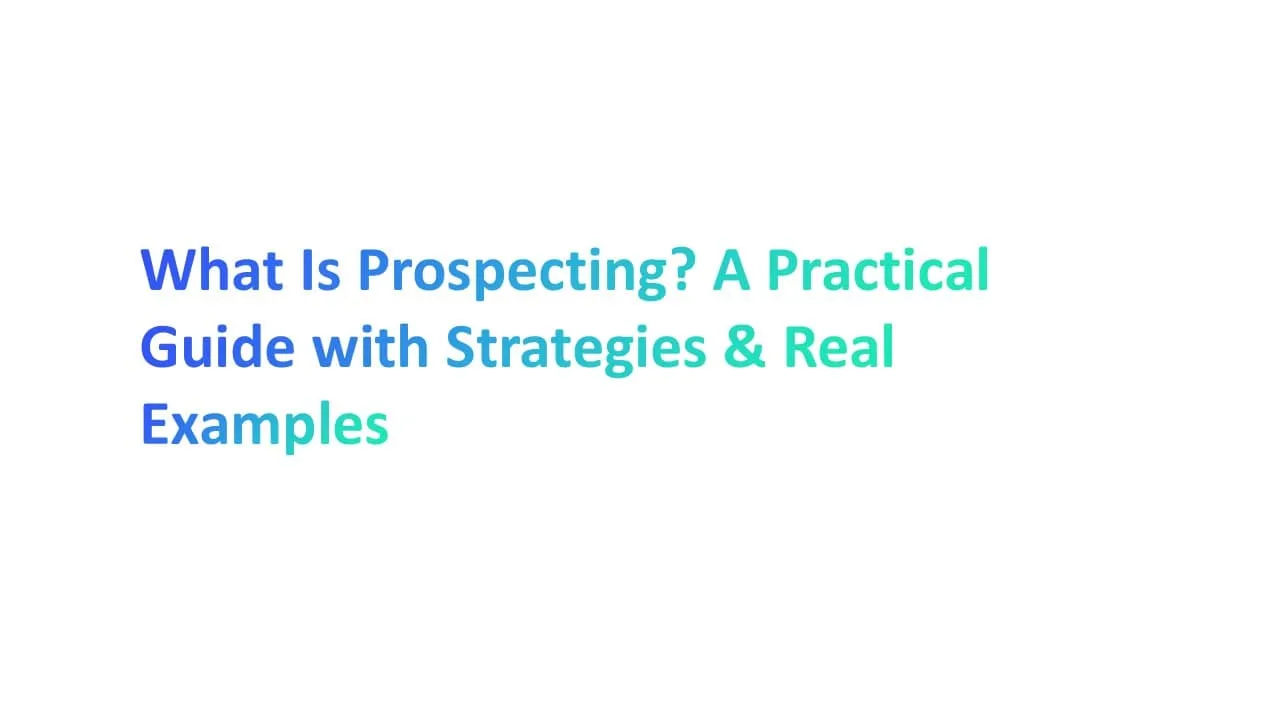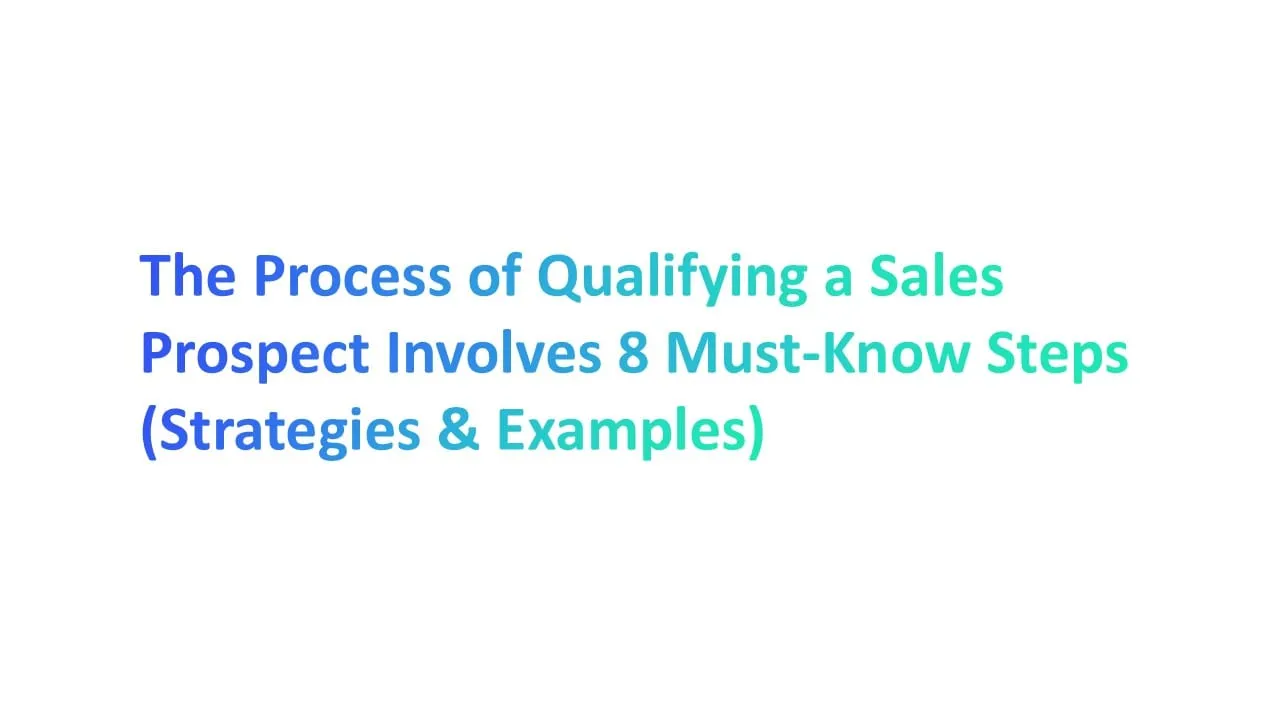Prospecting is the cornerstone of successful sales, involving the identification and engagement of potential customers to build a robust sales pipeline. It's noteworthy that 42% of salespeople find prospecting to be the most challenging aspect of the sales process, surpassing the difficulties of closing deals and qualifying leads.
By mastering effective sales prospecting techniques, sales reps can connect with qualified leads, streamline the sales cycle, and enhance their overall sales process.
This guide delves into practical strategies and real-world examples to elevate your sales prospecting efforts, aiming to convert potential buyers into satisfied customers.
What Is Prospecting?
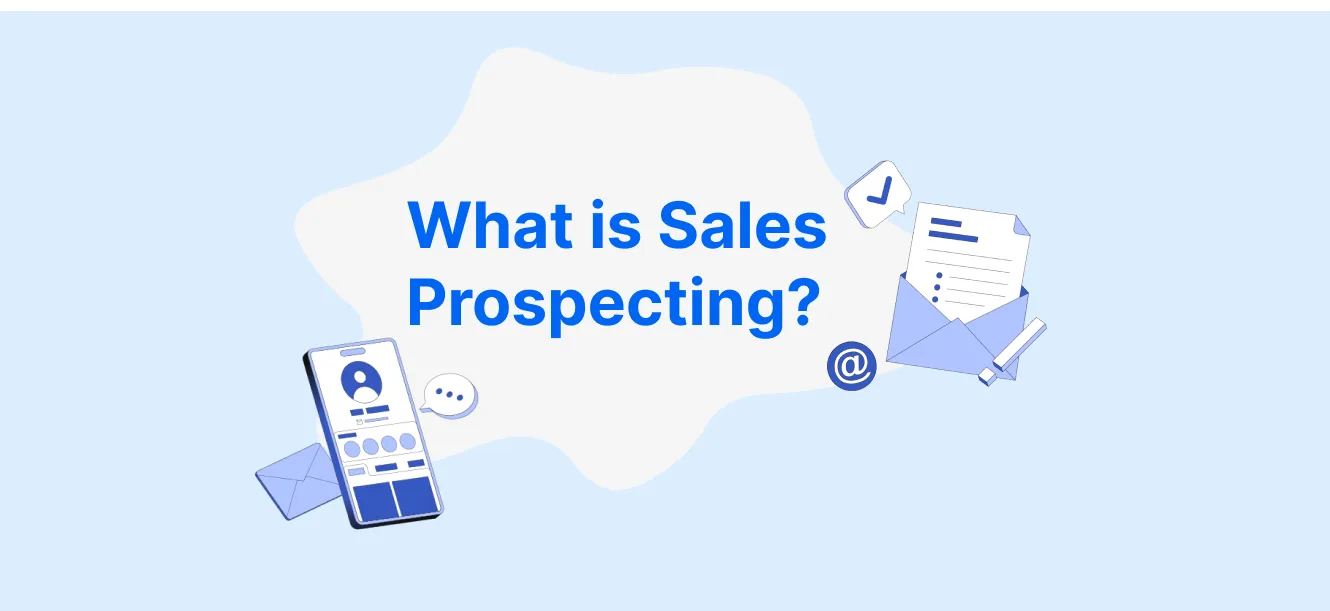
Prospecting is the process of initiating contact with potential leads to identify new customers for a product or service. It involves sales teams using sales prospecting methods like cold calling, direct mail, and outbound prospecting to connect with prospective buyers.
Successful prospecting requires understanding a prospect’s business, identifying their pain points, and offering valuable solutions.
Tools like LinkedIn Sales Navigator and sales navigator help in targeting customers effectively. Sales reps also use marketing materials, attend networking events, and apply prospecting strategies to reach higher quality leads and drive business forward.
How Does the Sales Prospecting Process Work?

The sales prospecting process begins with customer data analysis to identify target accounts that match the ideal profile. Sales teams use marketing efforts like social media platforms, inbound prospecting, and outbound strategies to reach potential customers. A well-defined sales prospecting plan helps in contacting potential customers through phone calls, emails, and direct sellers.
Once a connection is made, sales reps assess the prospecting journey by understanding the sales pitch and addressing prospect's pain points. Using valuable insights from past interactions, they refine their approach to improve engagement. Platforms like social media channels and marketing campaigns play a key role in attracting potential customers and driving interest.
Consistent follow-ups help generate interest and convert inbound leads into paying customers. The goal is to create strong relationships with existing customers while pursuing higher quality leads through most effective prospecting strategies.
How Does the Sales Process Influence Prospecting Success?

A well-structured sales process helps sales professionals identify and engage with the right prospects efficiently. It ensures that teams start prospecting with clear goals and strategies. Using the best prospecting techniques, they can qualify leads faster and improve conversions.
A strong sales strategy aligns prospecting efforts with business objectives, making it easier to reach decision-makers like account executives. Tools like marketing qualified leads tracking and a structured sales funnel help in prioritizing high-value prospects.
Understanding the sales prospecting definition and refining the prospecting game ultimately lead to better engagement and deal closures.
8 Proven Strategies for Sales Prospecting That Work

Successful sales prospecting requires a structured approach and the right strategies. Sales reps need to apply sales prospecting tips that align with their goals, ensuring they connect with the right prospects.
Below are the key strategies that improve the prospecting process and help businesses build meaningful relationships with potential clients.
1. Account-Based Prospecting
Focusing on high-value accounts ensures that efforts are directed toward prospects with the highest conversion potential. Instead of casting a wide net, sales reps should focus on key accounts that align with business goals.
How to Approach Account-Based Prospecting:
- Identify target accounts based on past engagement and industry relevance.
- Personalize outreach efforts to match the specific needs of each prospect.
- Align sales and marketing efforts to create a consistent message.
- Track responses and refine messaging for better engagement.
2. Social Selling
Engaging with prospects through digital platforms helps establish trust and build relationships before making a direct pitch. Social selling allows sales reps to connect with potential buyers in a non-intrusive way.
Best Practices for Social Selling:
- Leverage platforms like LinkedIn and Twitter for professional networking.
- Share relevant content that resonates with your audience.
- Engage with potential clients by commenting on their posts and starting conversations.
- Use social proof, such as testimonials and case studies, to build credibility.
3. Cold Email Personalization

Customizing emails increases the chances of responses and makes outreach more effective. A generic cold email is easy to ignore, but a personalized approach shows genuine interest.
How to Personalize Cold Emails Effectively:
- Address recipients by their name and mention something specific about their company.
- Keep messages concise and focused on solving a key challenge.
- Use clear call-to-actions that encourage a reply or next steps.
- Follow up with additional value, not just reminders.
4. AI and Automation
Technology helps streamline repetitive tasks, allowing sales reps to focus on meaningful interactions. Automation can improve efficiency without sacrificing personalization.
Ways to Use AI and Automation in Prospecting:
- Automate follow-ups and reminders to ensure consistency.
- Use AI-driven analytics to prioritize the most promising leads.
- Personalize automated messages based on past interactions.
- Track engagement metrics to refine outreach strategies.
5. Networking and Referrals
Building relationships through referrals can shorten the sales cycle and improve trust. People are more likely to engage with businesses that come recommended by someone they trust.
How to Leverage Networking and Referrals:
- Attend industry events and join professional groups.
- Ask satisfied clients for introductions to potential prospects.
- Offer incentives for referrals to encourage word-of-mouth marketing.
- Maintain strong relationships with past clients for long-term connections.
6. Content Marketing for Prospecting

Providing valuable content helps establish credibility and attracts inbound leads. Instead of reaching out cold, sales reps can position themselves as industry experts through educational content.
Effective Content Marketing Tactics:
- Create blog posts, whitepapers, and case studies that address common industry challenges.
- Share educational videos and infographics to simplify complex topics.
- Offer free resources, such as e-books or webinars, in exchange for contact information.
- Repurpose content across different platforms to reach a broader audience.
7. Data-Driven Prospecting
Analyzing data allows for better decision-making and more targeted outreach. Instead of guessing, sales teams can rely on concrete insights to refine their approach.
How to Apply Data in Prospecting:
- Use analytics tools to assess prospect engagement and behavior.
- Segment prospects based on past interactions and preferences.
- Monitor response rates and adjust strategies accordingly.
- Leverage customer insights to refine the ideal client profile.
8. Relationship-Based Prospecting
Prioritizing long-term connections leads to more sustainable business growth. Sales isn’t just about making one-time deals—it’s about creating valuable, ongoing relationships.
Ways to Strengthen Prospect Relationships:
- Focus on helping rather than selling to build genuine trust.
- Maintain regular check-ins even when no immediate deal is expected.
- Offer value through industry insights, reports, and consultations.
- Keep the conversation open, ensuring prospects feel supported throughout their decision-making process.
By applying these sales prospecting important strategies, sales teams can enhance their outreach efforts and improve overall success rates. A structured approach combined with data-driven insights ensures that prospecting remains efficient and effective.
Real-World Examples of Successful Sales Prospecting

1. HubSpot's Inbound Marketing Approach
HubSpot, a leading developer of software products for inbound marketing and sales, has effectively utilized content marketing as a core sales prospecting strategy.
Approach:
- Educational Content Creation: HubSpot consistently produces high-quality blogs, eBooks, webinars, and tutorials that address common challenges faced by their target audience. This positions them as a valuable resource and attracts potential customers organically.
- Lead Nurturing: By offering free content in exchange for contact information, HubSpot builds a database of potential leads. They then employ targeted email campaigns to nurture these leads through the sales funnel.
Results:
This strategy has established HubSpot as an authority in the marketing domain, leading to a steady influx of qualified leads and contributing significantly to their growth.
2. Zendesk's Free Trial Offering
Zendesk, a customer service software company, utilizes a free trial model to attract and convert prospects.
Approach:
- Risk-Free Trials: Zendesk offers potential customers a 30-day free trial of their software, allowing prospects to experience the product's value firsthand without any financial commitment.
- Personalized Follow-Up: During the trial period, sales representatives engage with users to provide support, answer questions, and demonstrate additional features tailored to the prospect's specific needs.
Results:
This hands-on experience increases the likelihood of conversion, as prospects can directly assess the product's relevance and effectiveness for their business.
3. IBM's Cold Calling Revival
Despite the rise of digital communication channels, IBM has demonstrated that traditional methods like cold calling can still be effective when executed strategically.
Approach:
- Targeted Calling Lists: IBM's sales team compiles lists of potential clients based on specific criteria, ensuring that their cold calls are directed toward businesses that are more likely to benefit from their solutions.
- Value-Focused Pitches: Rather than generic sales spiels, IBM representatives focus on understanding the prospect's pain points and tailor their pitches to showcase how IBM's offerings can address those specific challenges.
Results:
This personalized approach to cold calling has led to higher engagement rates and successful conversions, proving that with the right strategy, traditional prospecting methods remain viable.
These examples illustrate that successful sales prospecting can be achieved through diverse strategies, including content marketing, free trials, and even traditional cold calling, when tailored to meet the specific needs and preferences of potential customers.
Best Practices to Improve Your Sales Prospecting Process

Improving your sales prospecting process requires a strategic approach and continuous refinement. By following key best practices, sales reps can increase their chances of engaging with the right prospects and converting them into long-term customers.
Below are seven essential best practices, along with actionable steps to implement each one.
1. Research Prospects First
Understanding your prospects before reaching out is critical for building meaningful connections.
Effective research helps sales reps identify key decision-makers, their business challenges, and how their product or service can provide value. Instead of making generic pitches, tailored outreach creates a higher chance of engagement.
How to Do It:
- Use company websites, industry reports, and financial statements to understand the prospect’s business.
- Check their LinkedIn profile to learn about their role, background, and recent activity.
- Look for common connections or mutual interests to establish rapport.
- Identify their business goals and challenges to personalize your approach.
2. Segment and Prioritize Leads
Not all leads are equal, some are more likely to convert than others. By segmenting and prioritizing prospects based on their potential value, sales teams can allocate their time and resources effectively.
How to Do It:
- Classify leads based on industry, company size, and revenue potential.
- Assign priority scores based on engagement levels, such as email opens or website visits.
- Focus first on warm leads, those who have shown interest in your product or service.
- Use CRM tools to categorize prospects and track interactions.
3. Time Outreach Strategically

The timing of your outreach can significantly impact response rates. Sending messages when prospects are most likely to engage increases the chances of getting a reply.
How to Do It:
- Research the best times to contact prospects based on industry trends.
- Avoid reaching out on Monday mornings and Friday afternoons when engagement is low.
- Use scheduling tools to send emails at optimal times, even if you’re in a different time zone.
- Test different outreach times and adjust based on response rates.
4. Use Multi-Touch Engagement
A single email or call is rarely enough to capture a prospect’s attention. Multi-touch engagement involves reaching out through different channels over a period of time to stay on their radar.
How to Do It:
- Combine emails, phone calls, LinkedIn messages, and direct mail for varied touchpoints.
- Follow up with a second message a few days after the first if there’s no response.
- Share relevant content, such as case studies or industry reports, to add value.
- Space out interactions to avoid overwhelming the prospect.
5. Refine Messaging Continuously
Prospects receive countless sales messages daily. Refining your messaging ensures that your outreach stands out and resonates with the recipient.
How to Do It:
- Keep messages short, clear, and focused on the prospect’s needs.
- Avoid jargon and overused sales phrases—write in a conversational tone.
- Use personalization beyond just adding the prospect’s name; reference specific business challenges.
- Test different subject lines and email formats to see what works best.
6. Track and Analyze Performance

Without tracking outreach efforts, it’s difficult to know what’s working and what needs improvement. Analyzing key metrics helps sales teams refine their approach for better results.
How to Do It:
- Track email open rates, response rates, and call conversion rates.
- Use CRM and analytics tools to monitor engagement trends.
- Identify patterns in successful outreach and replicate those tactics.
- Adjust messaging, timing, and prospecting channels based on data insights.
7. Test and Optimize Constantly
Sales prospecting is not a one-size-fits-all process. Testing different strategies and optimizing based on results helps refine the approach for maximum effectiveness.
How to Do It:
- A/B test different subject lines, call scripts, and email formats.
- Experiment with different outreach cadences to find the right balance.
- Gather feedback from prospects and adjust strategies accordingly.
- Stay updated on industry trends and adapt prospecting methods as needed.
By following these best practices, sales teams can improve their prospecting process and increase the likelihood of meaningful interactions with potential clients. Consistency, personalization, and data-driven adjustments are key to long-term success in prospecting.
Common Challenges in Sales Prospecting and How to Overcome Them

Sales prospecting comes with its own set of challenges. Many sales reps struggle to connect with the right prospects, get responses, and maintain momentum in their outreach.
Addressing these challenges with a structured approach can lead to better results. Below are common issues in sales prospecting and how to overcome them effectively.
1. Finding Quality Leads
Reaching out to the wrong prospects wastes time and resources. A lack of quality leads means lower conversions and frustration for sales reps.
How to Overcome It:
- Define an ideal customer profile based on industry, company size, and pain points.
- Use data-driven tools to filter and identify high-potential leads.
- Leverage referrals from existing customers to connect with similar businesses.
- Monitor prospect engagement through website visits, content downloads, and event participation.
2. Low Response Rates
Many outreach efforts go unanswered. Prospects are often busy or uninterested, making it difficult to start meaningful conversations.
How to Overcome It:
- Personalize messages by mentioning specific business challenges or goals.
- Test different subject lines and opening lines to increase open rates.
- Follow up strategically with additional value instead of just reminders.
- Reach out through multiple channels like email, LinkedIn, and phone calls.
3. Handling Rejection

Rejection is a natural part of sales, but repeated rejections can be discouraging. Many sales reps struggle to stay motivated after multiple unanswered emails or declined calls.
How to Overcome It:
- View rejection as a learning opportunity rather than a failure.
- Ask for feedback to understand why a prospect isn’t interested.
- Stay professional and keep the door open for future interactions.
- Shift focus to prospects who show more interest in your offering.
4. Avoiding Generic Outreach
A one-size-fits-all approach doesn’t work in sales prospecting. Generic outreach lacks relevance and often leads to ignored emails or calls.
How to Overcome It:
- Research each prospect’s business, industry, and recent activities.
- Customize outreach messages with insights that matter to them.
- Use case studies or success stories relevant to their industry.
- Keep messages short, clear, and tailored to their specific needs.
5. Long Sales Cycles
Some industries naturally have longer sales cycles, which can make it challenging to keep prospects engaged throughout the process.
How to Overcome It:
- Set clear expectations with prospects about timelines and next steps.
- Nurture leads with relevant content, case studies, and industry insights.
- Regularly check in without being overly persistent or pushy.
- Identify decision-makers early to avoid delays in the buying process.
6. Managing Follow-Ups
Many sales opportunities are lost because of inconsistent follow-ups. Prospects may forget about previous conversations if there’s no structured follow-up plan.
How to Overcome It:
- Set reminders to follow up at appropriate intervals.
- Use CRM tools to track conversations and schedule follow-ups.
- Provide additional value in follow-up messages instead of just asking for a reply.
- Test different follow-up approaches to see what works best.
7. Staying Consistent
Prospecting requires ongoing effort, but many sales reps lose momentum when they don’t see immediate results.
How to Overcome It:
- Set daily or weekly prospecting goals to stay on track.
- Schedule prospecting time in your calendar to ensure consistency.
- Keep refining your approach based on data and feedback.
- Stay motivated by celebrating small wins and progress.
By addressing these common challenges, sales reps can improve their prospecting efforts and build stronger connections with potential customers. Continuous learning and adaptability are key to success in sales prospecting.
Top Sales Prospecting Tools Every Sales Rep Should Use
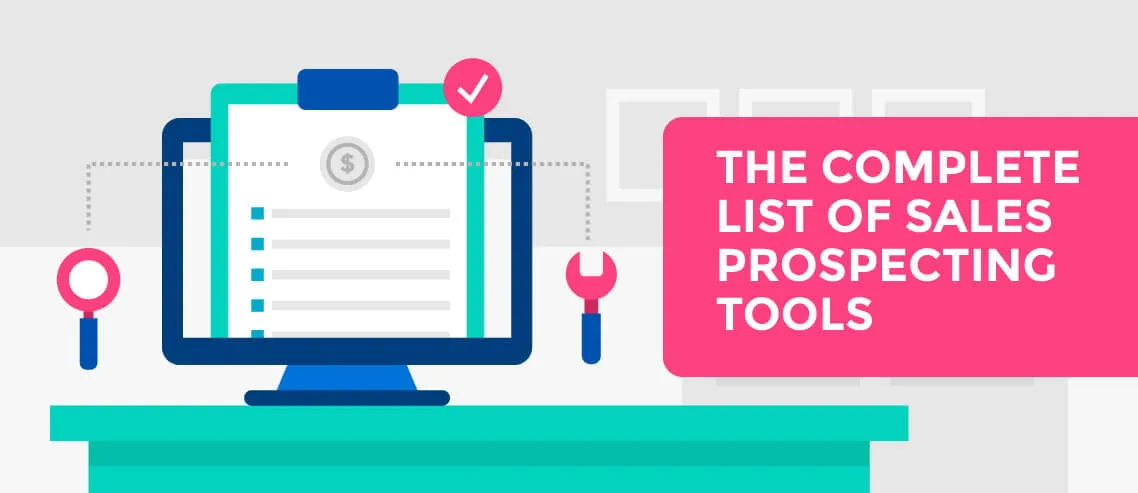
In today's competitive market, leveraging the right tools can significantly enhance a sales rep's prospecting efforts. Below is a curated list of essential tools across various categories, each accompanied by notable platforms and their key features.
1. CRM Tools
Customer Relationship Management (CRM) tools help sales teams manage interactions with current and potential customers, streamlining processes and improving profitability.
- HubSpot Sales Hub
A comprehensive CRM platform that offers features like email tracking, meeting scheduling, and pipeline management. Its user-friendly interface integrates seamlessly with various marketing tools, making it ideal for businesses aiming to align their sales and marketing efforts. - Salesforce Sales Cloud
A leading CRM solution that provides extensive customization options, sales forecasting, and contact management. Its robust ecosystem supports integrations with numerous third-party applications, catering to businesses of all sizes.
2. Lead Generation Platforms
These platforms assist in identifying and capturing potential customers, ensuring a steady flow of prospects into the sales funnel.
- Reply.io
A sales engagement platform equipped with AI-powered tools for automating outreach across email and LinkedIn. It features a built-in database to find and reach out to prospects at scale, and integrates with third-party tools for advanced prospecting and verification. - Seamless.AI
This platform provides users with access to a verified database of business and contact information. It utilizes artificial intelligence to analyze and prioritize leads based on their likelihood to convert into customers.
3. Email Outreach Tools
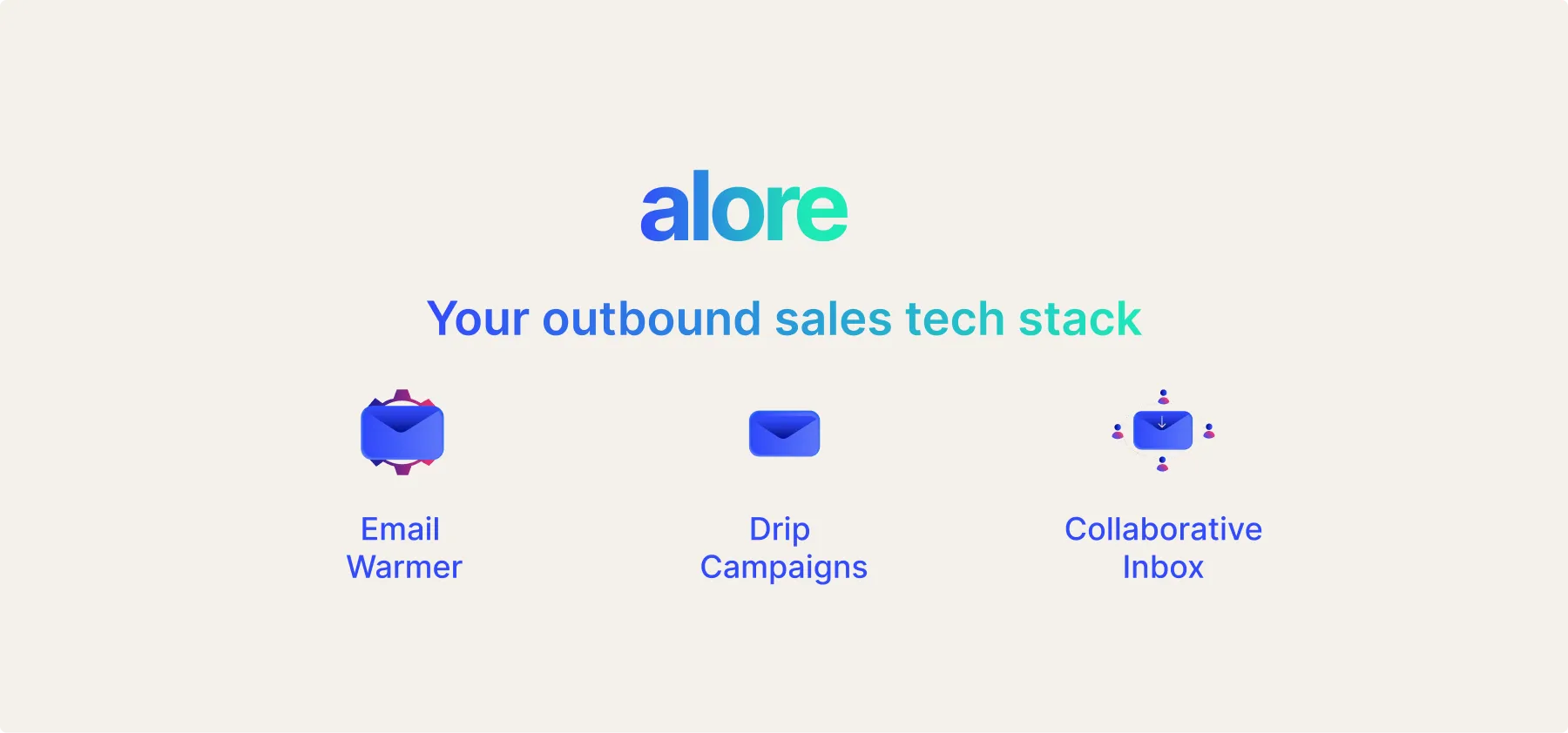
Effective email outreach tools enable personalized communication at scale, increasing the chances of engaging potential leads.
- AloreAlore is an all-in-one outbound sales platform designed to streamline lead generation and email outreach.Key Features:
- Automated Email Warm-Up: Ensures emails land in recipients' primary inboxes without manual intervention.
- Drip Campaign Management: Facilitates the creation and scheduling of personalized email sequences to engage potential customers.
- Collaborative Inbox: Allows teams to manage multiple email addresses from a single interface, enhancing efficiency.
- Advanced Analytics: Provides tracking and insights to measure email performance and optimize campaigns.
- CRM Integration: Seamlessly connects with popular CRM systems to synchronize data and streamline workflows.
- Built-in Email Verification: Improves deliverability by validating email addresses before outreach.
- ActiveCampaign
This tool combines email marketing, marketing automation, and CRM capabilities. It offers advanced segmentation, personalized content, and automation workflows to enhance email outreach efforts.
4. Social Selling Tools
Social selling tools help sales reps leverage social media platforms to identify prospects, build relationships, and ultimately drive sales.
- LinkedIn Sales Navigator
A premium LinkedIn tool that offers advanced search capabilities, lead recommendations, and real-time insights on prospects, enabling sales reps to effectively engage with potential customers. - Sprout Social
A social media management platform that provides monitoring, analytics, and engagement tools. It helps sales teams track brand mentions, analyze social media performance, and engage with prospects across various platforms.
5. Sales Intelligence Tools
These tools provide valuable insights into prospects and markets, enabling informed decision-making and tailored sales strategies.
- HubSpot Sales Hub
Beyond its CRM capabilities, HubSpot offers sales intelligence features such as email tracking, pipeline management, and insights into valuable contacts, helping sales teams manage their entire sales cycle effectively. - Seamless.AI
In addition to lead generation, Seamless.AI offers sales intelligence by providing access to a verified database and analyzing leads to prioritize those most likely to convert.
6. Automation and AI Tools

Automation and AI tools streamline repetitive tasks, allowing sales reps to focus on building relationships and closing deals.
- Salesforce Einstein
An AI-powered platform that offers predictive analytics, personalized recommendations, and automated data entry, enhancing sales productivity and decision-making. - Reply.io
This platform automates outreach across multiple channels, including email and LinkedIn, using AI to optimize engagement and response rates.
7. Call and Meeting Scheduling Tools
Efficient scheduling tools eliminate the back-and-forth of setting up meetings, ensuring seamless communication with prospects.
- HubSpot Sales Hub
Offers integrated meeting scheduling features that sync with your calendar, allowing prospects to book available time slots directly, reducing friction in the scheduling process. - Reply.io
Includes scheduling functionalities that integrate with calendars, enabling prospects to choose meeting times that work best for them, streamlining the booking process.
Incorporating these tools into your sales process can enhance efficiency, improve lead quality, and ultimately drive better sales outcomes. Selecting the right combination tailored to your specific needs will empower your sales team to excel in their prospecting efforts.
Conclusion
Sales prospecting isn’t just about reaching out to random people—it’s about finding the right potential customers, understanding their needs, and building real connections. With the right prospecting strategies and tools, sales reps can turn leads into long-term clients. Keep refining your approach, test what works, and stay consistent. The more you personalize and adapt, the better your results will be. Ready to start prospecting? Take what you’ve learned here and put it into action.

